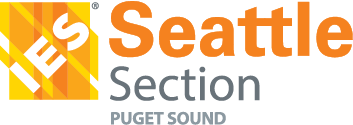This three day in-person course provides participants with an introduction to the fundamentals of illumination. It gives a comprehensive overview of basic lighting principles, lamp and luminaire types, lighting calculations, and controls, as well as functional and aesthetic applications best practices. This course is ideal for architects, engineers, designers, contractors, sales reps, customer service reps, manufacturers, distributors, and students. Find full description for each module below.
CEUs: 25 CEUs, 25 LU-HSW approved based on course completion (does not qualify for NCQLP CEUs).
Dates:
- Friday October 27th 8am-5pm | The Lighting Group; 1021 S Bailey St, Seattle WA, 98108
- Friday November 3rd8am-5pm | Electrical Reps West 5811 6th Ave S, Seattle, WA 98108
- Saturday November 4th8am-3pm | Electrical Reps West 5811 6th Ave S, Seattle WA 98108
Location: TBD in Seattle Area
Continental breakfast and lunch will be provided each day.
Format: Each module will include 2 hours of instruction followed by a Quiz and Q&A Session. Sessions will be taught by local section lighting experts.
Pricing:
| US: $350 IES members$475 non-members$225 Emerging Professional Members$125 Students
|
+ IES Course Materials Purchase Course Materials HEREClass Registration:Register Here |
Class materials will be $100 for members, EPS, and Students; $125 for non-members.
Materials must be purchased directly from the IES web site.
- New to lighting? Not a member yet? For new Eps, $100 of EP membership cost will be reimbursed to student on successful completion of the class. (to be confirmed)
- Students must be currently enrolled in a college, university, or trade program.
- Note: IES Sustaining Members Receive 10% Discount on course materials
Students Must Register by Friday, October 20th.
Questions? Contact Shaun Darragh at liteshaun@gmail.com Seattle Section Education Chair
IES Seattle Fundamentals of Lighting In-Person
Learning Modules
Friday October 27th
Class introductions and format discussion
Module 1: Introduction to Light and Lighting A brief history of light and lighting. Professional practice. The physics of light. Vision. Color. Light and health
Module 2: Electric Light Sources Introduction to electric light sources. Legacy sources. Incandescent. Fluorescent. High Intensity Discharge. Solid state
Lunch Break
Module 3: Daylighting Introduction to daylighting. Characteristics of daylight. Delivering daylight. Integrating daylight and electric light. View. Modeling daylight
Module 4: Luminaires (Portland: Mariel Acevedo & Vancouver: Colin Macduff). Introduction to luminaires. Luminaire optics. Classification. Mounting. Interior luminaires. Exterior luminaires
Friday November 3rd
Module 5: Lighting Controls Introduction to Lighting Controls. Dimming. Sensors: presence detection. Sensors: light detection. Networked systems. General Considerations
Module 6: Metrics, photometry, calculations, and rendering Introduction. Photometry: Lab and Reports. Calculations. Point method calculations. Lumen method calculations. Computer modeling. Field Measurements
Lunch Break
Module 7: Codes & Standards, and Practice Introduction. Electrical and Building Codes. Energy Codes. Aspirational Standards. Lighting Standards. Economics
Module 8: : Lighting for interior environments Fundamentals of lighting design. Languages of lighting design. Visibility and comfort. Visual experience. Attraction and display. Light and architecture. Wellness and sustainability
Saturday November 4th
Module 9: Lighting for exterior environments Lighting for dark environments. Parks, campuses, and civic spaces. Streets and roadways. Parking facilities. Athletic facilities. Facades and landscapes. Sustainability and wellness
Module 10: Review. Lighting basics. Vision & Perception (color, contrast). Daylight, Electric Light, Controls. Light & Professional Practice. Balancing Needs and Sustainability. Resources.
Lunch Break
AME: Ask me anything. Your time to discuss anything in the course you’d like to go over again or may still be unclear.
Class Exam and Review
Note: Specific module order may vary based on instructor availability.
